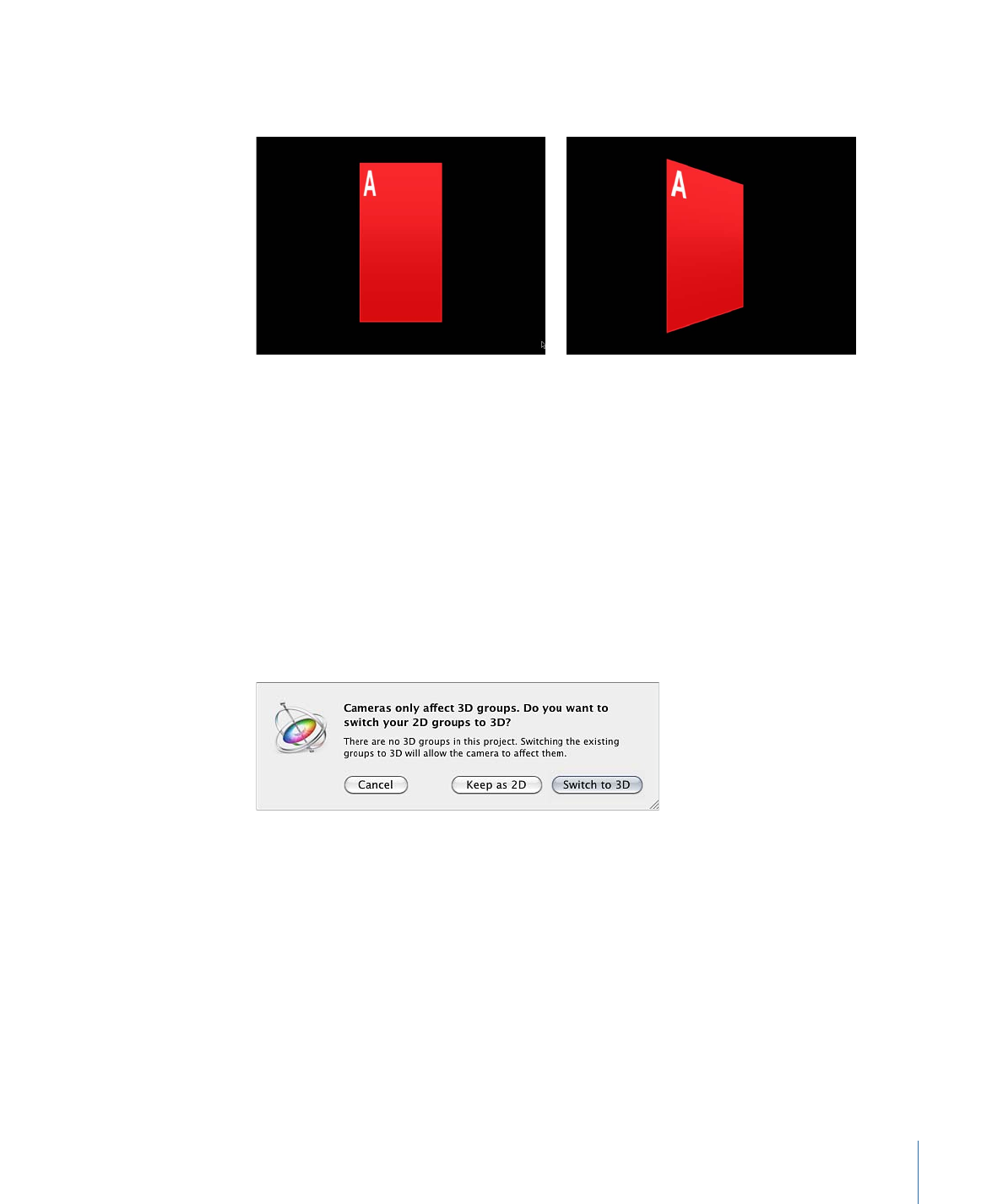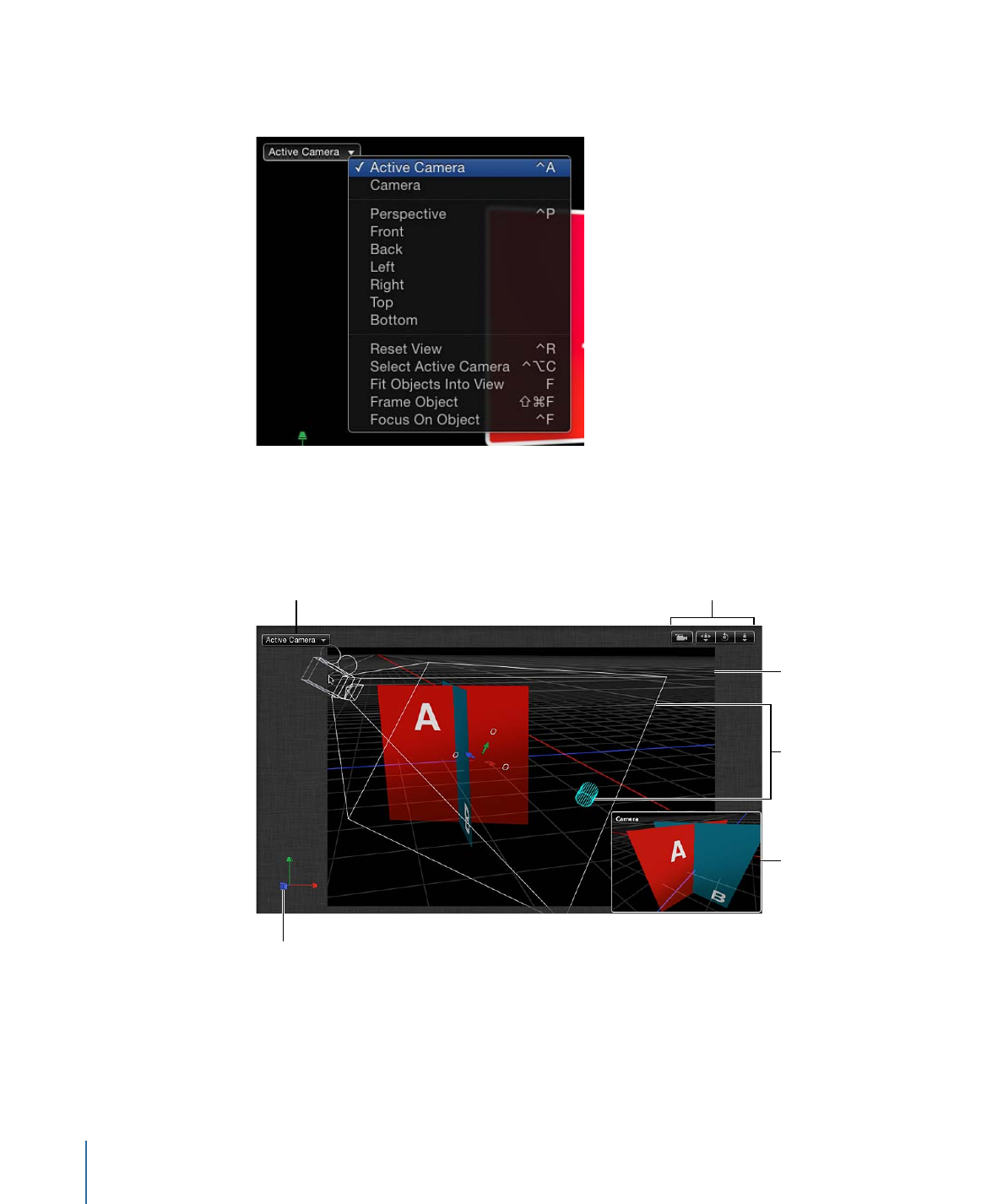
Views
There are several view layouts, with each layout consisting of an arrangement of viewports.
Each viewport displays the scene from the point of view of a camera. Reference camera
views have a specific default position and orientation.
There are two types of reference cameras:
• Orthographic
• Perspective
An orthographic camera views the scene by looking straight down one of the world axes:
X, Y, or Z. The default orthographic cameras do not appear in the Layers list, Timeline, or
Canvas. The Front and Back cameras look straight down the Z axis. The Top and Bottom
cameras look straight down the Y axis. The Left and Right cameras look straight down
the X axis.
Orthogonal camera view with no rotation
1240
Chapter 21
3D Compositing

Orthographic cameras do not show perspective. Perspective cameras—and scene cameras
that you add to a project—distort the view the way a real-world camera would.
Object rotated in orthogonal camera view
Object rotated in perspective camera view
To access camera views and camera controls, add a scene camera to your project.
To add a scene camera to a Motion project
1
Choose Object > New Camera (or press Command-Option-C).
A camera object is added to the Layers list, the Timeline, and the Canvas (represented
there by a wireframe icon). The 3D Transform tool in the toolbar becomes active, the
Camera HUD appears (if it isn’t visible, press F7), and the Camera pane in the Inspector
becomes available.
If you add a camera to a project that contains no existing 3D groups, the following dialog
appears:
2
Click Keep as 2D or Switch to 3D.
1241
Chapter 21
3D Compositing

After you add a camera to a project, the Camera menu becomes available in the upper-left
corner of the Canvas.